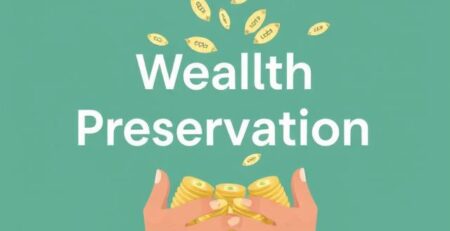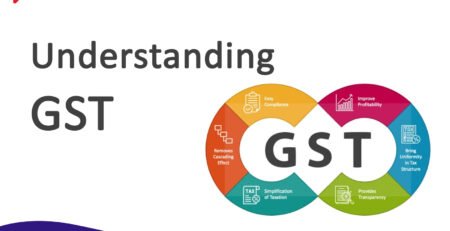India’s Generational Wealth Gap: From Single Income Success to Multi-Income Struggles
Introduction: The Indian Dream Under Siege
The stark reality of India’s economic transformation is perhaps best captured in the contrast between generations. Where our parents and grandparents could afford comfortable homes, raise multiple children, take annual family vacations, and build substantial savings on a single government job or business income, today’s families struggle to make ends meet despite multiple income sources and higher educational qualifications.
This generational wealth gap has become one of the most pressing socioeconomic issues in modern India. The question “Where did we go wrong?” resonates deeply with millions of middle-class Indians who find themselves working harder than their parents yet achieving less financial security and social mobility.
The Previous Generation’s Economic Advantage
The Golden Era of Single Income Prosperity
A generation ago, India’s economic landscape operated on fundamentally different principles. The typical middle-class family in the 1980s and 1990s could comfortably maintain:
- Homeownership: Houses were priced at 3-5 times annual household income, making them accessible to government employees and small business owners
- Large families: Families with 3-4 children were common without significant financial strain
- Quality education: Private schooling and coaching were affordable luxuries, not necessities
- Healthcare access: Medical expenses were manageable, with government hospitals providing quality care
- Savings culture: Regular investments in fixed deposits, provident funds, and gold were standard practices
- Social mobility: Clear pathways for advancement through education and stable employment
The Economic Framework That Enabled Middle-Class Prosperity
Government Job Security: The License Raj era, despite its limitations, provided stable employment with regular increments, pensions, and comprehensive benefits. A government job was synonymous with social status and financial security.
Controlled Economy: Price controls and subsidies kept essential commodities affordable. The Public Distribution System ensured food security, while government regulation maintained reasonable prices for utilities and transportation.
Joint Family System: Extended families provided economic support, shared resources, and reduced individual financial burden. Property ownership was often collective, reducing individual housing costs.
Limited Consumer Culture: Fewer consumer choices and social pressures meant lower expenditure on lifestyle products. Savings rates were naturally higher due to limited spending options.
Educational Accessibility: Quality education was available at affordable rates through government institutions and aided schools. Professional courses had minimal fees, making higher education accessible to middle-class families.
Today’s Economic Reality: The Multi-Income Struggle
The New Normal: Working More, Earning Less
Modern Indian families face an unprecedented economic landscape despite the country’s rapid growth and technological advancement. Between 2020 and 2024, property prices in India grew at an annual rate of 9.3% while household income only rose by 5.4%, creating a widening gap between earnings and living costs.
Today’s typical middle-class household characteristics include:
- Multiple income sources: Both spouses working, plus freelancing, side businesses, or gig economy participation
- EMI dependence: Life revolves around Equated Monthly Installments for home loans, car loans, and education loans
- Rental struggles: Cities like Hyderabad saw a 69% drop in affordable units, Mumbai 60%, and NCR 45%
- Educational expenses: Private schooling, coaching classes, and higher education costs consuming 30-40% of household income
- Healthcare burden: Medical expenses and insurance premiums creating significant financial stress
- Reduced family size: Financial constraints limiting family planning decisions
The Stark Numbers
India’s wealth inequality has reached alarming levels. The richest 1% now own more than 40% of the country’s total wealth, while the bottom 50% hold just 3%. This concentration of wealth has created barriers to social mobility that previous generations didn’t face.
Men earn 82% of the labour income in India, whereas women earn 18% of it, highlighting the gender dimension of the wealth gap that affects household financial stability.
Key Factors Behind India’s Generational Wealth Gap
1. The Housing Affordability Crisis
The most significant factor contributing to India’s generational wealth gap is the housing affordability crisis. In Mumbai, the Price-to-Income ratio hits 14.3 — the worst in the country. Delhi sits at 10.1, while even tech hubs like Bengaluru have breached affordability limits.
Historical Context: In the 1990s, a 2BHK apartment in Mumbai suburbs cost approximately ₹3-5 lakhs. Today, the same property costs ₹1-2 crores, representing a 20-40x increase while salaries have increased only 8-10x.
Regional Variations: An 11 per cent spike in property prices through the September quarter spooked the housing dreams of many middle-income buyers, particularly affecting tier-1 cities.
Wealth Building Impact: Real estate has traditionally been the primary wealth-building vehicle for Indian middle-class families. When this pathway becomes inaccessible, entire generations lose their primary means of asset accumulation.
2. Educational Inflation and Debt Burden
The cost of quality education has increased exponentially, creating a generation burdened by educational expenses and loans:
School Education: Private school fees have increased 15-20% annually, forcing families to allocate 25-30% of income to children’s education.
Higher Education: Professional courses that cost ₹50,000-1,00,000 per year in the 1990s now cost ₹10-20 lakhs annually. Engineering and medical education abroad can cost ₹50 lakhs-1 crore.
Coaching Culture: The proliferation of coaching institutes has created an additional financial burden, with families spending ₹2-5 lakhs per child annually on supplementary education.
3. Healthcare Cost Explosion
Rising healthcare costs have shifted from being an occasional expense to a constant financial burden:
Medical Inflation: Healthcare costs have increased 12-15% annually, far exceeding general inflation rates.
Insurance Gaps: Despite health insurance, out-of-pocket expenses for major treatments can range from ₹5-50 lakhs, devastating middle-class savings.
Elderly Care: With changing family structures, caring for aging parents has become an individual financial responsibility rather than a shared family obligation.
4. Lifestyle Inflation and Consumer Debt
The shift from a savings-oriented to a consumption-oriented economy has created new financial pressures:
EMI Culture: Easy credit availability has led to lifestyle inflation, with families taking loans for vehicles, appliances, and vacations.
Social Pressure: Increased social media exposure and peer pressure have created artificial lifestyle standards, forcing families to spend beyond their means.
Technology Costs: Smartphones, internet, streaming services, and gadgets have become necessary expenses, adding to monthly budgets.
5. Employment Instability and Gig Economy
The nature of employment has fundamentally changed:
Job Security: The concept of lifetime employment has disappeared. Even well-paying IT jobs face layoffs and economic uncertainty.
Benefits Erosion: Modern employment often lacks the comprehensive benefits (housing, medical, education allowances) that government jobs provided.
Skill Obsolescence: Rapid technological change requires continuous learning and reskilling, adding to time and financial pressures.
Regional Variations and Urban-Rural Divide
Metropolitan Challenges
Mumbai: The P2I ratio hits 14.3 — the worst in the country, making homeownership nearly impossible for middle-class families.
Delhi NCR: Property prices have made even outer suburban areas unaffordable for average earners.
Bangalore: Despite being a tech hub, housing costs have outpaced IT salary growth.
Hyderabad: Saw a 69% drop in affordable units, reflecting the severity of the housing crisis.
Tier-2 and Tier-3 Cities
While relatively more affordable, these cities face their own challenges:
Limited Opportunities: Fewer high-paying jobs force migration to expensive metros.
Infrastructure Gaps: Poor healthcare, education, and transportation infrastructure reduce quality of life.
Social Aspirations: Increasing desire for metro-like lifestyle without proportional income growth.
The Policy and Systemic Failures
Economic Liberalization Consequences
While economic liberalization brought growth, it also created new inequalities:
Sector-Specific Growth: IT, finance, and real estate sectors benefited disproportionately, while traditional middle-class sectors stagnated.
Reduced Government Role: Privatization reduced affordable housing, healthcare, and education options.
Financial Market Volatility: Increased exposure to market risks through mutual funds and insurance-linked investments.
Taxation and Regulatory Issues
Tax Burden: The middle class bears a disproportionate tax burden while the wealthy find ways to minimize taxation.
GST Impact: The total tax component calculated with other applicable taxes constituted 20% of the total property value, further increasing housing costs.
Regulatory Complexity: Complex regulations favor large corporations over small businesses and individual entrepreneurs.
The Social and Psychological Impact
Mental Health Consequences
The financial stress of the generational wealth gap has created significant mental health challenges:
Anxiety and Depression: Financial insecurity contributes to increased mental health issues among young professionals.
Delayed Life Decisions: Financial constraints force delays in marriage, homeownership, and family planning.
Social Isolation: Inability to maintain social status leads to reduced social participation and networking.
Family Structure Changes
Nuclear Family Stress: The breakdown of joint family systems has increased individual financial burden.
Intergenerational Conflict: Differing economic realities create tension between generations.
Women’s Workforce Participation: Female workers earning only 63 paise for every 1 rupee earned by male workers affects household financial stability.
Current Trends and Future Projections
Demographic Dividend or Disaster?
India’s young population could be an asset or liability depending on economic policies:
Skill-Job Mismatch: Higher education expansion hasn’t matched job creation, leading to educated unemployment.
Entrepreneurship Challenges: Lack of capital and regulatory hurdles limit new business creation.
Migration Patterns: Internal migration continues from rural to urban areas, increasing pressure on city infrastructure.
Technology and Automation Impact
Job Displacement: Automation threatens traditional middle-class jobs in banking, accounting, and manufacturing.
New Opportunities: Technology also creates new job categories, but requires different skills.
Digital Divide: Unequal access to technology and digital literacy creates new forms of inequality.
Government Initiatives and Their Limitations
Housing Programs
PM Awas Yojana: Aims to address housing needs for 1 crore urban poor and middle-class families with a ₹10 lakh crore investment.
RERA Implementation: Real Estate Regulatory Authority has improved transparency but hasn’t addressed affordability.
Affordable Housing Policies: Various state and central schemes exist but face implementation challenges.
Financial Inclusion Efforts
Jan Dhan Yojana: Financial inclusion has improved, but wealth creation opportunities remain limited.
Digital Payments: UPI and digital payment systems have increased financial access but haven’t addressed fundamental inequality.
Startup India: Government initiatives support entrepreneurship but face funding and regulatory challenges.
Potential Solutions and Reform Recommendations
Housing Policy Reform
Land Acquisition Reform: Streamlining land acquisition for affordable housing projects.
Density Regulations: Allowing higher FSI (Floor Space Index) to increase housing supply.
Rental Housing: Developing institutional rental housing markets to provide alternatives to ownership.
Cooperative Housing: Reviving cooperative housing societies for middle-class families.
Employment and Skills Development
Vocational Training: Expanding skill-based training programs aligned with market demands.
Entrepreneurship Support: Simplifying business registration and providing seed capital.
Social Security: Extending social security benefits to gig economy workers.
Healthcare Reform
Universal Healthcare: Implementing comprehensive healthcare coverage to reduce out-of-pocket expenses.
Preventive Care: Focusing on preventive healthcare to reduce long-term costs.
Medical Education: Increasing medical college seats to improve healthcare access.
Educational Reform
Quality Public Education: Improving government school quality to reduce private school dependence.
Skill-Based Curriculum: Aligning education with industry requirements.
Education Loans: Reforming education loan systems to reduce burden on families.
The Path Forward: Individual and Collective Strategies
Individual Adaptation Strategies
Financial Literacy: Understanding investment options beyond traditional savings.
Multiple Income Streams: Developing diverse income sources to increase financial resilience.
Geographic Arbitrage: Considering smaller cities for better cost-of-living ratios.
Skill Development: Continuously updating skills to remain relevant in the job market.
Frugal Innovation: Adopting cost-effective lifestyle choices without compromising quality.
Community and Social Action
Cooperative Models: Reviving cooperative housing, buying clubs, and shared resources.
Political Engagement: Participating in democratic processes to advocate for policy changes.
Social Entrepreneurship: Creating businesses that address social problems while generating income.
Knowledge Sharing: Building communities focused on financial education and mutual support.
Conclusion: Navigating the New Economic Reality
India’s generational wealth gap represents a fundamental shift in economic opportunity and social mobility. While previous generations could achieve middle-class prosperity through stable employment and controlled prices, today’s families face unprecedented challenges despite higher education levels and economic growth.
The transformation from a regulated economy to a market-driven system has created both opportunities and challenges. The urban housing shortage increased by 54% to 29 million in 2018, highlighting the scale of the crisis facing Indian families.
Understanding these systemic changes is crucial for developing effective solutions. The path forward requires coordinated action at individual, community, and policy levels. While the challenges are significant, India’s demographic dividend, technological capabilities, and entrepreneurial spirit provide hope for creating more equitable economic opportunities.
The goal is not to return to the controlled economy of the past but to create new pathways to prosperity that work for all Indians in the modern economy. This requires acknowledging the changed economic landscape and implementing reforms that address the root causes of the generational wealth gap.
Success will require innovative approaches to housing, education, healthcare, and employment that leverage India’s strengths while addressing its structural weaknesses. Only through comprehensive reform can we ensure that future generations have access to the same opportunities for prosperity and social mobility that defined the Indian middle class dream.
The question “Where did we go wrong?” has complex answers rooted in policy choices, economic transitions, and social changes. By understanding these factors and working collectively toward solutions, India can build a more equitable economic future that serves all its citizens, not just the wealthy few.












